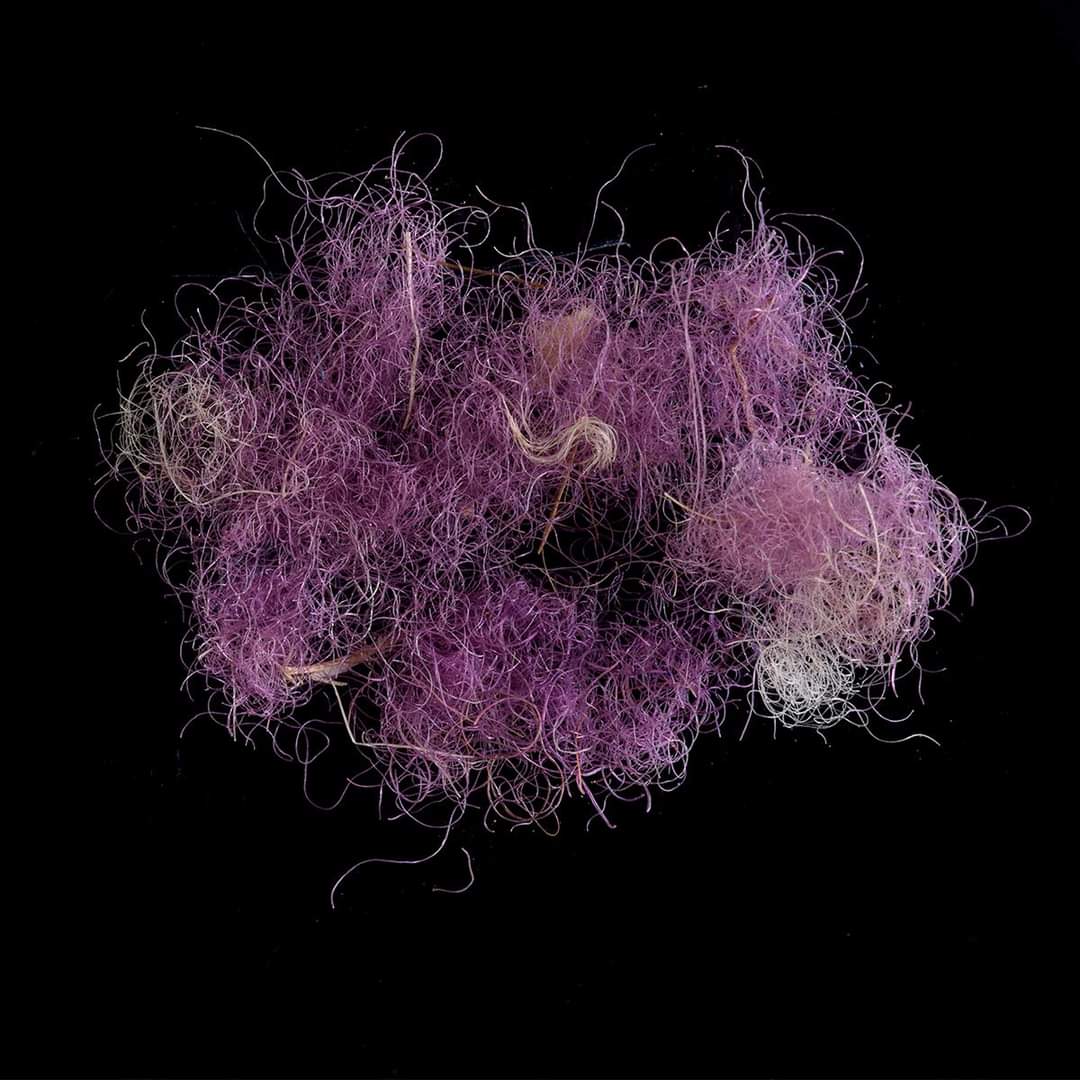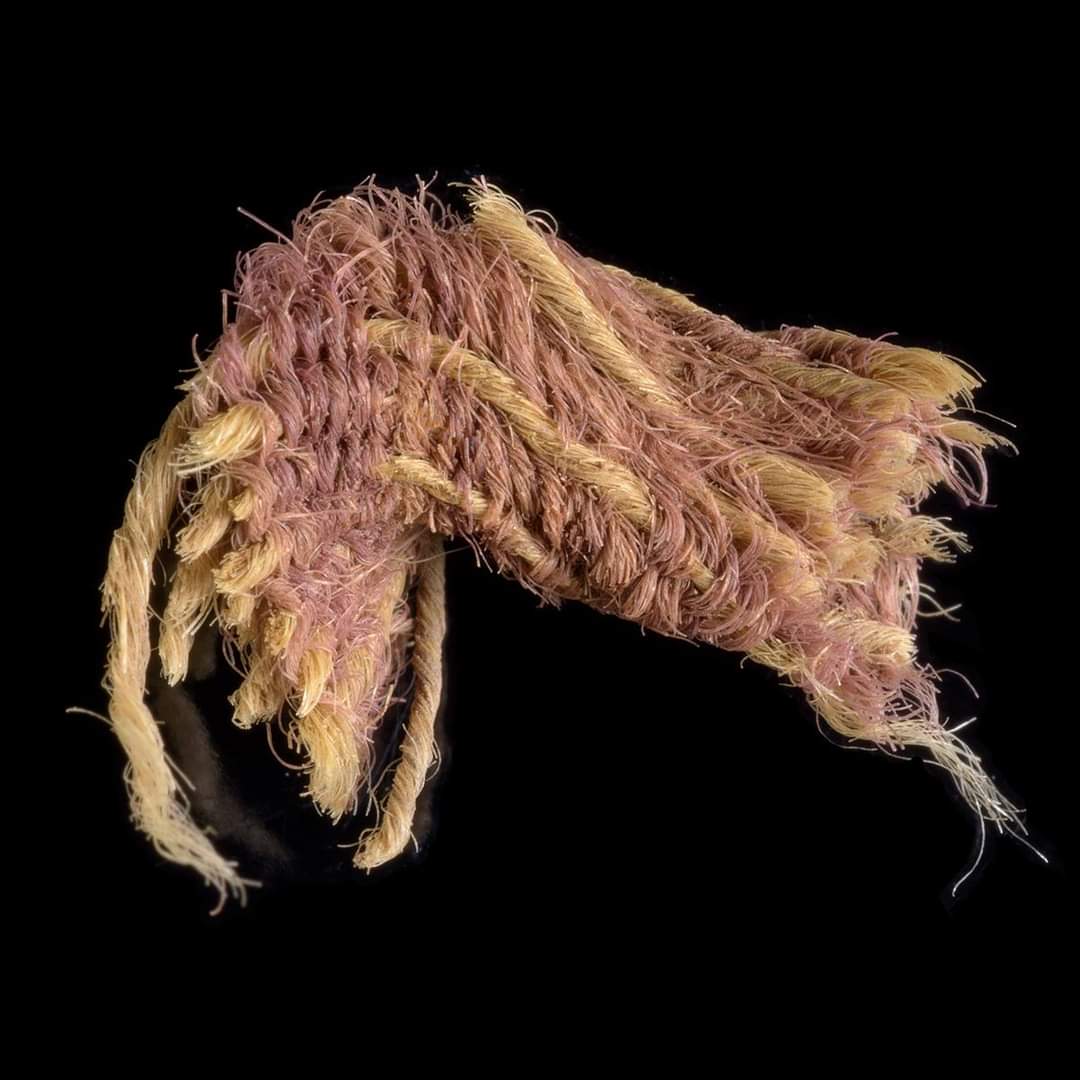"이스라엘서 3천년전 다윗왕 시절 보라색 염색 직물 등 발굴"
2021-01-31 02:35
https://m.yna.co.kr/view/AKR20210131001300079?section=news
"이스라엘서 3천년전 다윗왕 시절 보라색 염색 직물 등 발굴" | 연합뉴스
"이스라엘서 3천년전 다윗왕 시절 보라색 염색 직물 등 발굴", 김상훈기자, 국제뉴스 (송고시간 2021-01-31 02:35)
www.yna.co.kr
근자 우리 공장 카이로 주재 특파가 교체되었으니 이스라엘을 포함하는 중동 일부까지 커버하는 그에게 내가 개인적으로 당부하기를
거기서 할 일을 첫째 이스라엘 백신 접종 둘째 고고학 발굴 이 두 가지일 것이로대 내친 김에 이집트 상형문자 공부해서 말년엔 그걸로 묵고 사는 방법도 있을 것이로다

추천했거니와 내심 고고학 발굴이라면 이집트를 염두에 두었지만 그가 전한 첫 고고학 소식은 이스라엘 쪽이라 요새 하도 이스라엘만 쳐다보다 걸린 소식이 저거 아닌가 한다.
아무튼 구약 다윗왕 시대라고 하면 기원전 대략 1천년 전 어간을 말하거니와 골리앗 때려잡던 이 친구 동네 조폭 수준인데 이에 기반하는 종교가 유대교요 그에 야수가 별도 분파를 맹글어 나도 이제 대장질할끼다 하며 태동한 종파가 기독신이라 그때문에 유명해진 거지 뭐가 있겠는가?

코딱지만한 부족 이끈 동네 이장쯤 되는 친구라 시오니즘 고고학이 그것을 부풀려 툭하면 다윗왕 시대를 팔아먹는데 지나지 않는다.
아무튼 당시 구리광산 유적이 포진하는 팀나 계곡이라는 데를 판 모양이라 그에서 출토한 직물로 보라색 완연한 유물을 발견했다 해서 대서 특필이다.
그 의미에 대해선 우리 공장 기사를 참조했으면 싶고 내친 김에 이번 성과를 발표한 이스라엘 고고학 당국 sns 계정을 뒤지니 아니나 다를까 아래와 같은 선전이 있어 그것을 전재한다.

The Emperor’s New Clothes
*
A joint research by the Israel Antiquities Authority, Tel Aviv University | אוניברסיטת תל-אביב, and Bar-Ilan University presents a glimpse into the wardrobe of King David and King Solomon >>
While examining the colored textiles from the Timna Valley - an ancient copper production district in southern Israel - the researchers were surprised to find remnants of woven fabric, a tassel, and fibers of wool dyed with royal purple. Direct radiocarbon dating confirms that the finds date from approximately 1000 BCE, corresponding to the biblical monarchies of David and Solomon in Jerusalem. The dye, which is produced from species of mollusk found in the Mediterranean, over 300 km from Timna, is often mentioned in the Bible and appears in various Jewish and Christian contexts -
“King Solomon made himself a chariot of the wood of Lebanon. He made the pillars thereof of silver, the bottom thereof gold, the covering of it of purple, the midst thereof being paved with love.” (Canticles 3:9–10)
This is the first time that purple-dyed textiles of the Iron Age have been found in Israel, or indeed throughout the Levant.
“This is a very exciting and important discovery,” explains Dr. Naama Sukenik, curator of organic finds at the Israel Antiquities Authority. “In antiquity, purple attire was associated with the nobility, with priests, and of course with royalty. The gorgeous shade of the purple, the fact that it does not fade, and the difficulty in producing the dye, which is found in minute quantities in the body of mollusks, all made it the most highly valued of the dyes, which often cost more than gold. Until the current discovery, we had only encountered mollusk-shell waste and potsherds with patches of dye, which provided evidence of the purple industry in the Iron Age. Now, for the first time, we have direct evidence of the dyed fabrics themselves, preserved for some 3000 years”.
The dye was identified at Bar Ilan University’s laboratories with an advanced analytical tool (HPLC) that indicated the presence of unique dye molecules, originating only in certain species of mollusk. According to Dr. Naama Sukenik, most of the colored textiles found at Timna, and in archaeological research in general, were dyed using various plant-based dyes that were readily available and easier to dye with. The use of animal-based dyes is regarded as much more prestigious and served as an important indicator for the wearer’s high economic and social status.
Prof. Erez Ben-Yosef from Tel Aviv University’s Archaeology Department shares that as a result of the region’s extremely dry climate, the team is also able to recover organic materials such as textile, cords and leather from the Iron Age, from the time of David and Solomon, providing a unique glimpse into life in biblical times. "If we excavated for another hundred years in Jerusalem, we would not discover textiles from 3000 years ago. The state of preservation at Timna is exceptional and it is paralleled only by that at much later sites such as Masada and the Judean Desert Caves. In recent years, we have been excavating a new site inside Timna known as ‘Slaves’ Hill’. The name may be misleading, since far from being slaves, the laborers were highly skilled metalworkers. Timna was a production center for copper, the Iron Age equivalent of modern-day oil. Copper smelting required advanced metallurgical understanding that was a guarded secret, and those who held this knowledge were the ‘Hi-Tech’ experts of the time." He says.
Prof. Erez Ben-Yosef identifies the copper-production center at Timna as part of the biblical kingdom of Edom, which bordered the kingdom of Israel to the south. According to him, the dramatic finds should revolutionize our concepts of nomadic societies in the Iron Age.“The new finds reinforce our assumption that there was an elite at Timna, attesting to a stratified society. In addition, since the mollusks are indigenous to the Mediterranean, this society obviously maintained trade relations with other peoples who lived on the coastal plain. However, we do not have evidence of any permanent settlements in the Edomite territory. The Edomite Kingdom was a kingdom of nomads"
“It is wrong to assume that if no grand buildings and fortresses have been found, then biblical descriptions of the United Kingdom in Jerusalem must be literary fiction. Our new research at Timna has showed us that even without such buildings, there were kings in our region who ruled over complex societies, formed alliances and trade relations, and waged war on each other. The wealth of a nomadic society was not measured in palaces and monuments made of stone, but in things that were no less valued in the ancient world – such as the copper produced at Timna and the purple dye that was traded with its copper smelters.” he adds.
Prof. Zohar Amar traveled to Italy where he cracked thousands of mollusks (which the Italians eat) and produced raw material from their dye glands that was used in hundreds of attempts to reconstruct ancient dyeing. “The practical work took us back thousands of years,” says Prof. Amar, “and it has allowed us to better understand obscure historical sources associated with the precious colors of azure and purple.”
-----
Share!
📸 credit: Dafna Gazit, courtesy of the Israel Antiquities Authority.
Hai Ashkenazi, courtesy of the Central Timna Valley Project
'NEWS & THESIS' 카테고리의 다른 글
| 얼굴이 동글동글해서 올빼미, 뉴욕 센트럴파크를 131년만에 찾았다는 Snowy Owl (0) | 2021.02.01 |
|---|---|
| 명문장으로 남은 과거시험의 필독서,《동래박의東萊博議》완간 (0) | 2021.01.31 |
| 새해 첫날 멕시코 수풀 파다가 건진 500년전 여인석상 (0) | 2021.01.30 |
| 소더비 대박 쳤다는 보티첼리 초상화 (0) | 2021.01.29 |
| 멸종위기로 가셨다는 아마존 민물돌고래 투쿠시 Tucuxi (0) | 2021.01.28 |




댓글